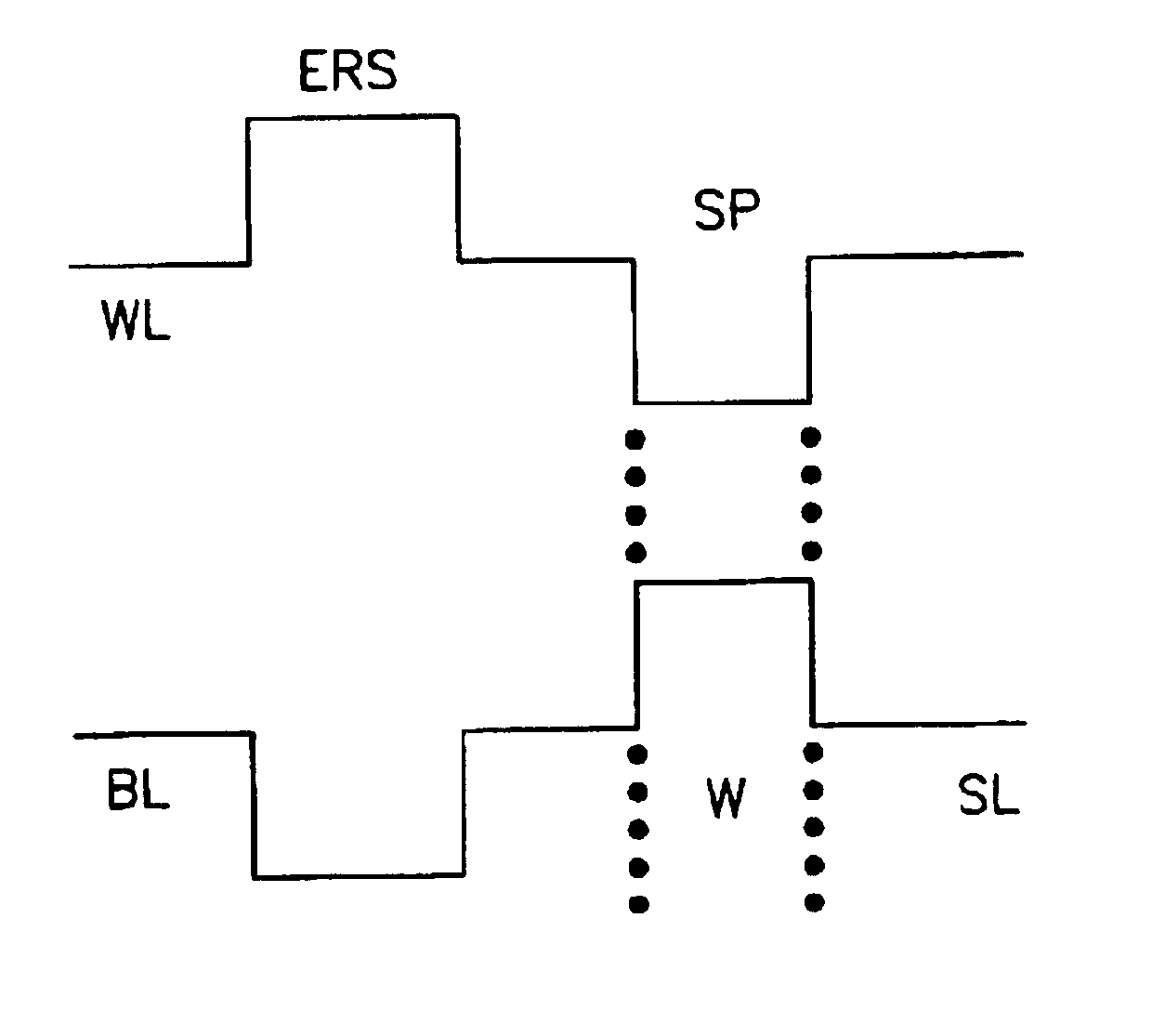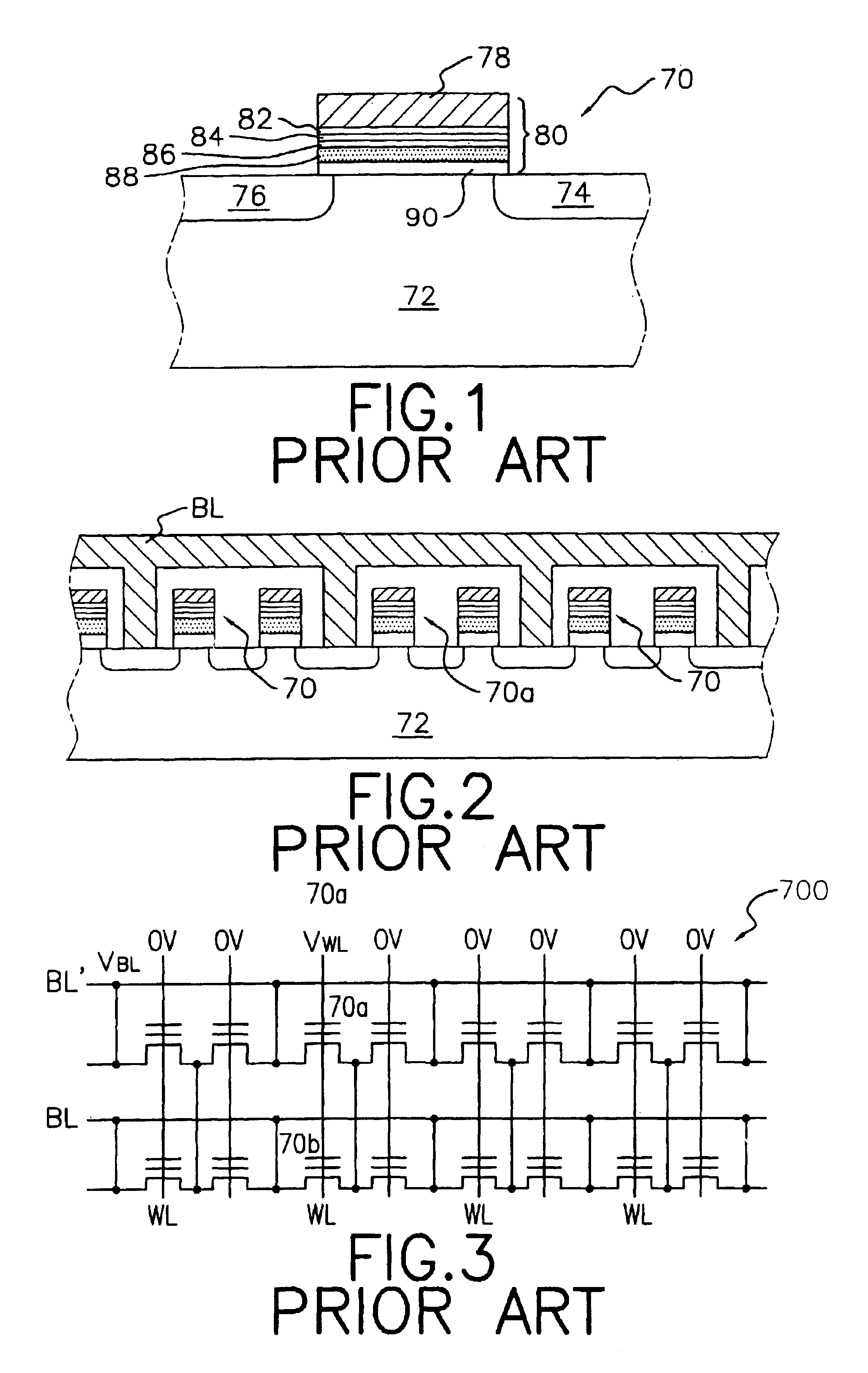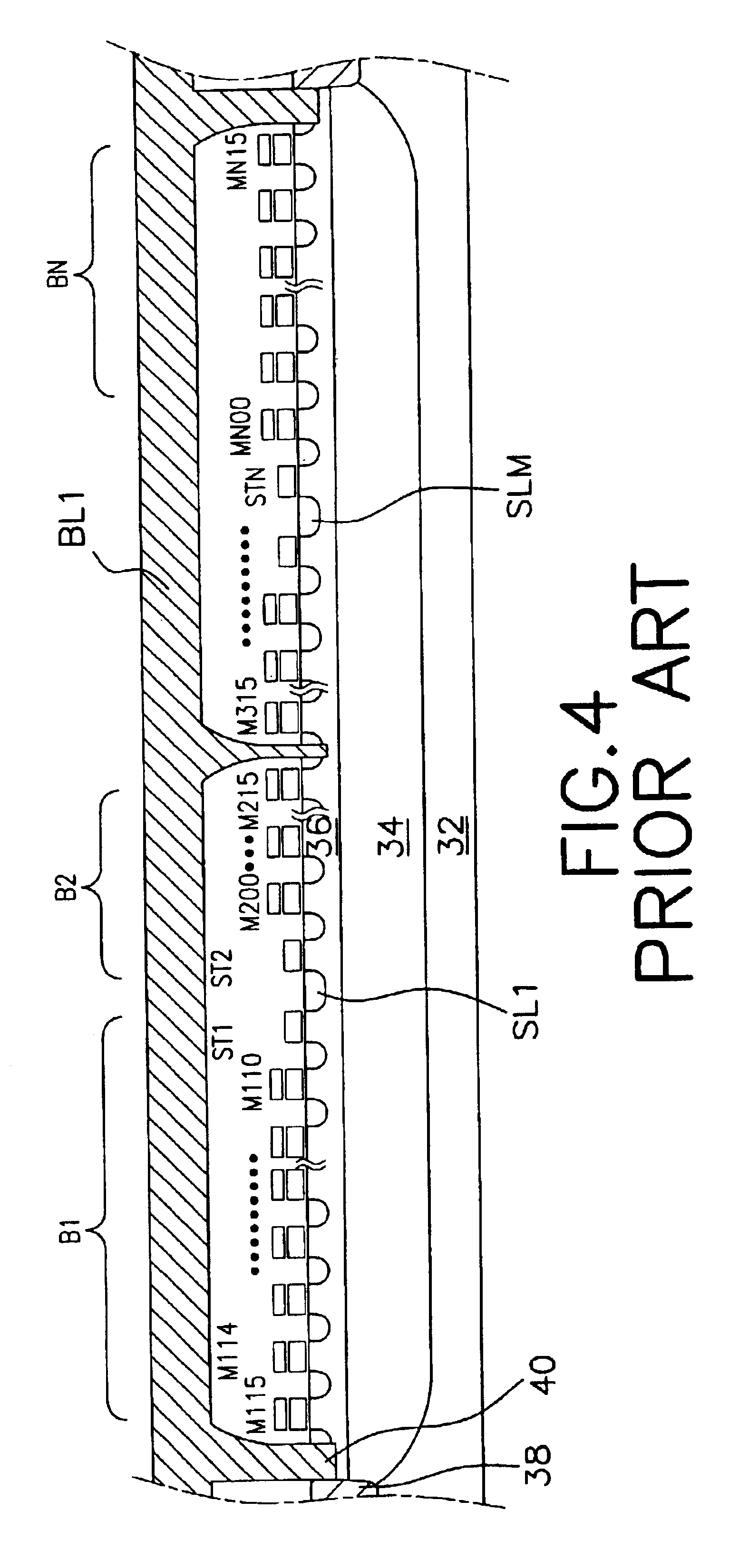Method of programming and erasing a non-volatile semiconductor memory
- Summary
- Abstract
- Description
- Claims
- Application Information
AI Technical Summary
Benefits of technology
Problems solved by technology
Method used
Image
Examples
Embodiment Construction
The present invention provides a method of programming flash memory with multi-level storage in the negative voltage range and erasing flash memory in the positive voltage range, as shown in FIG. 8, with enhanced conductivity and without noise disturbance.
In addition, a self-limiting means is performed along with the erasing operation (ERS) to prevent the continuous ascending of threshold voltage (Vth) as the erasing is in progress.
To this end, the memory cell structure in accordance with the present invention as shown in FIG. 9 comprises:a first conductivity substrate (10);a plurality of a second conductivity deep ion wells (12), being disposed on top of the first conductivity substrate (10);a plurality of a first conductivity shallow ion wells (14) being disposed in the second conductivity deep ion wells (12);a plurality of memory cell arrays (M) being formed over the first conductivity shallow ion wells (14);a plurality of shallow trench insulation (STI) layers (16) being dispose...
PUM
 Login to View More
Login to View More Abstract
Description
Claims
Application Information
 Login to View More
Login to View More - R&D
- Intellectual Property
- Life Sciences
- Materials
- Tech Scout
- Unparalleled Data Quality
- Higher Quality Content
- 60% Fewer Hallucinations
Browse by: Latest US Patents, China's latest patents, Technical Efficacy Thesaurus, Application Domain, Technology Topic, Popular Technical Reports.
© 2025 PatSnap. All rights reserved.Legal|Privacy policy|Modern Slavery Act Transparency Statement|Sitemap|About US| Contact US: help@patsnap.com



